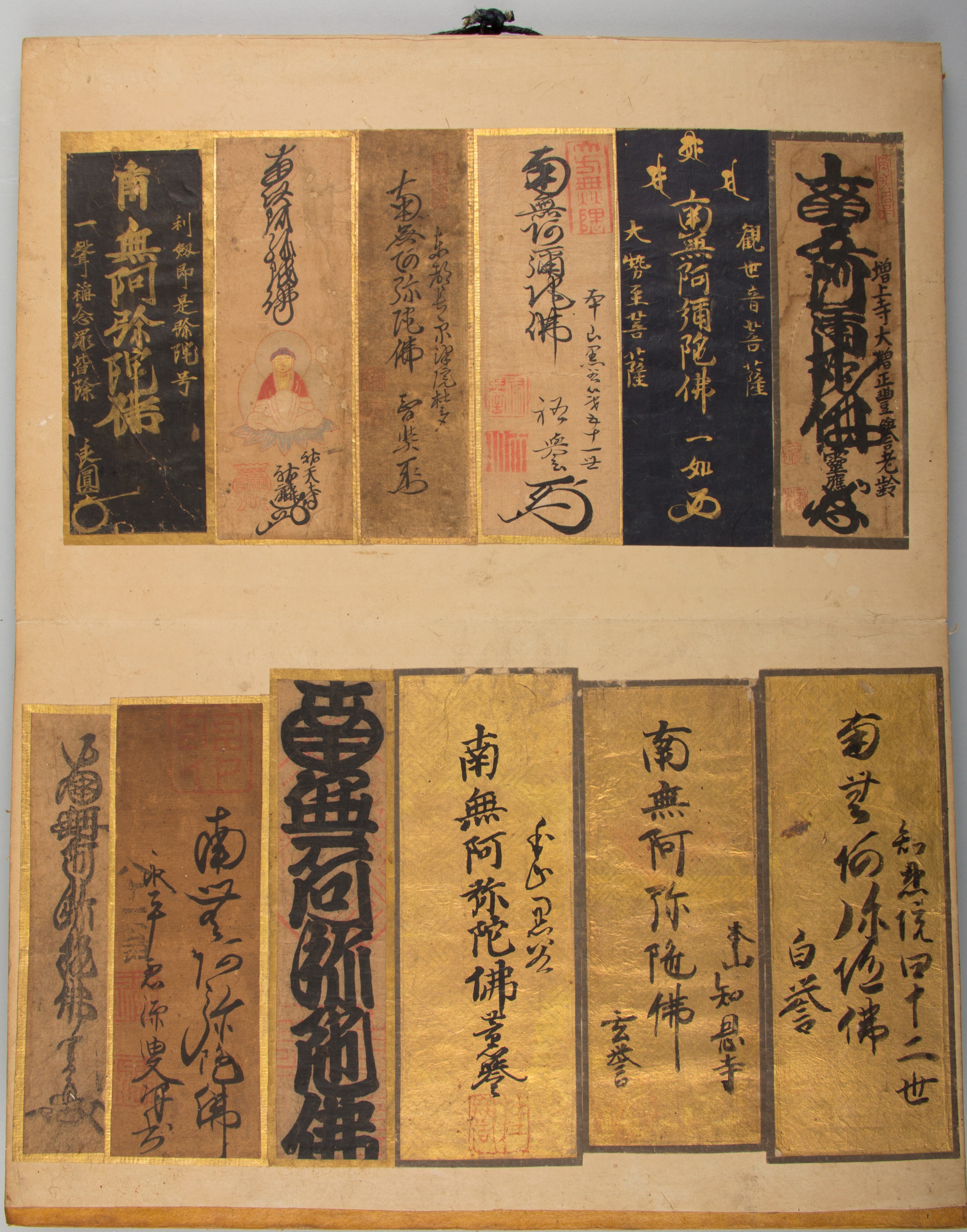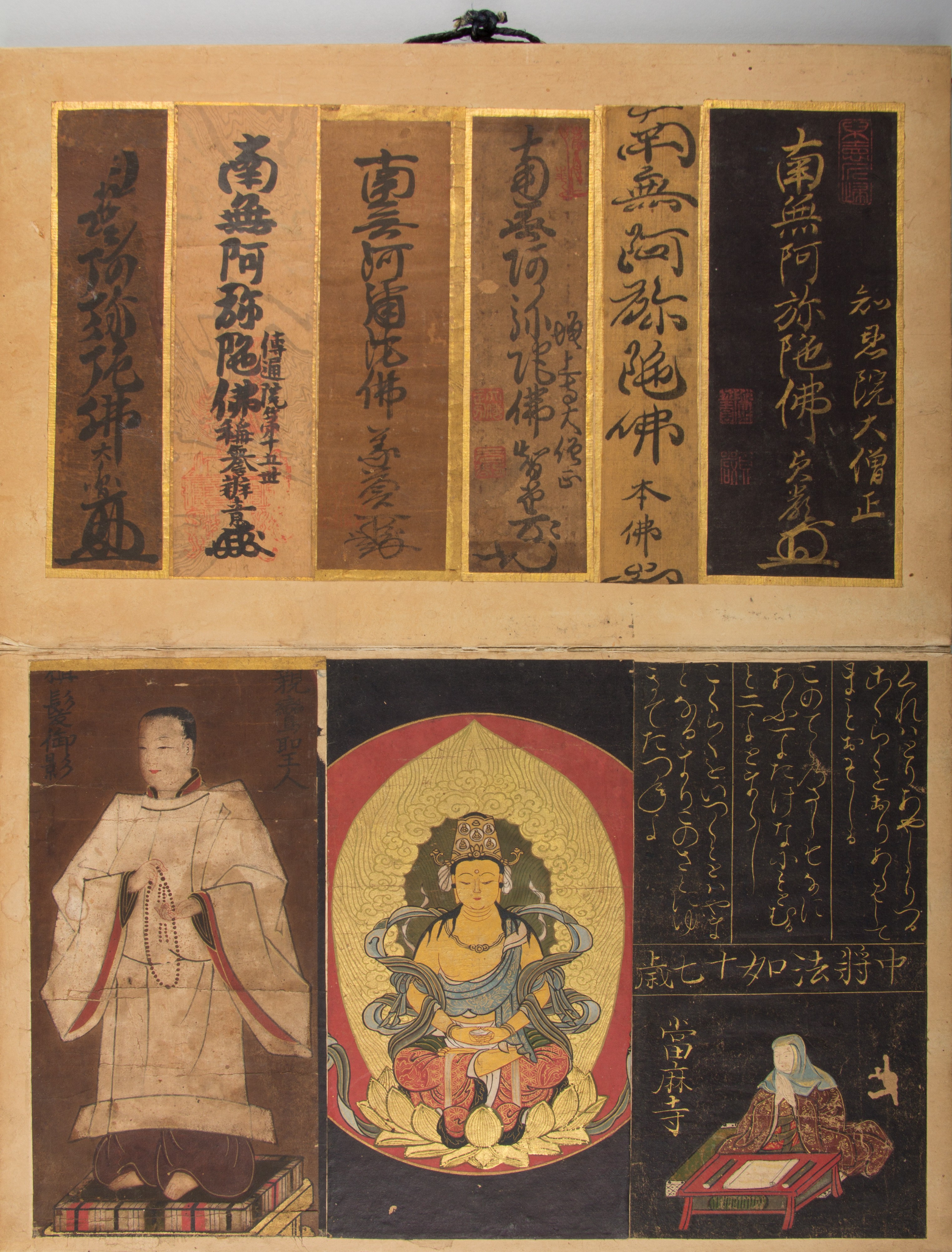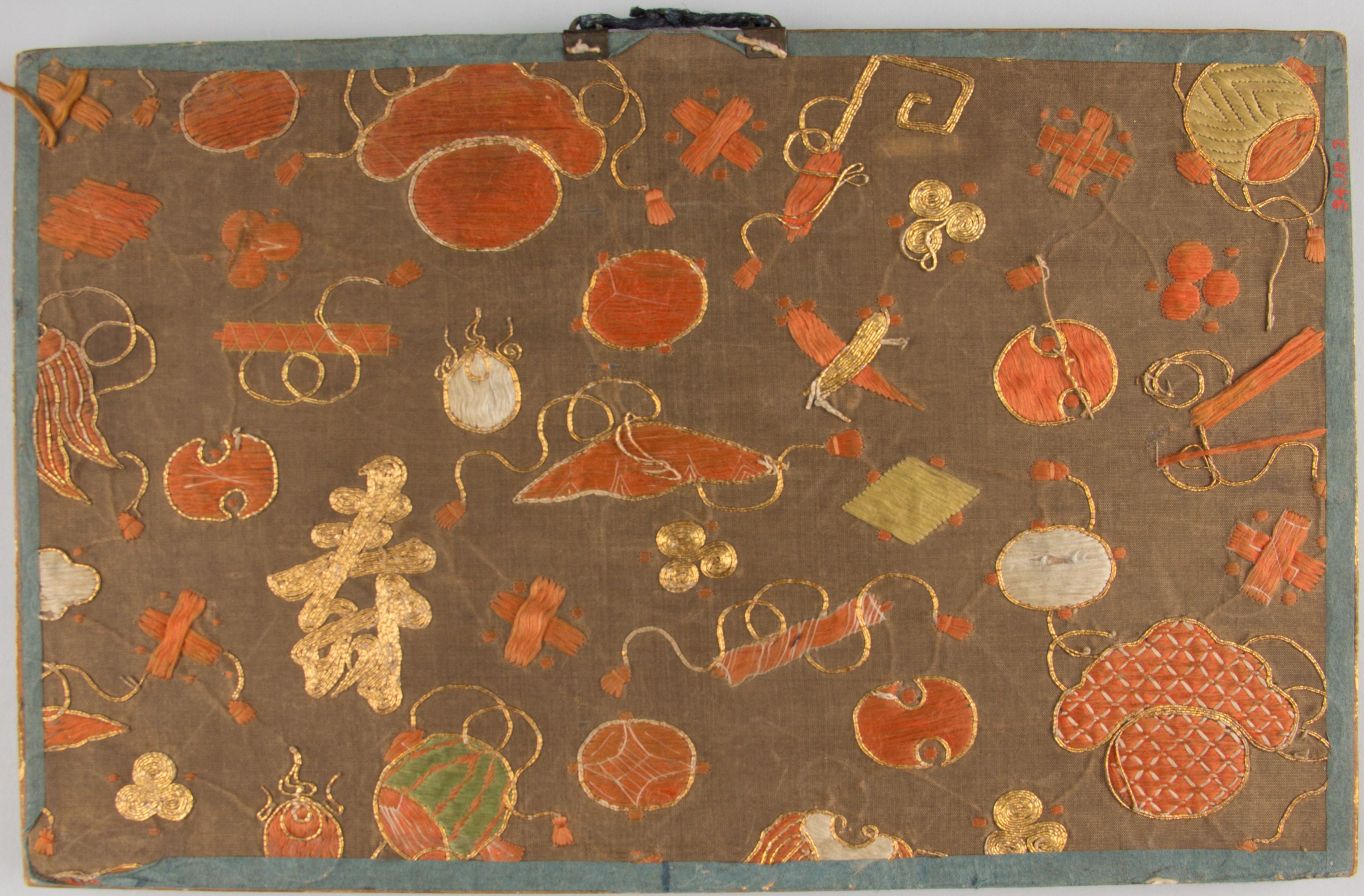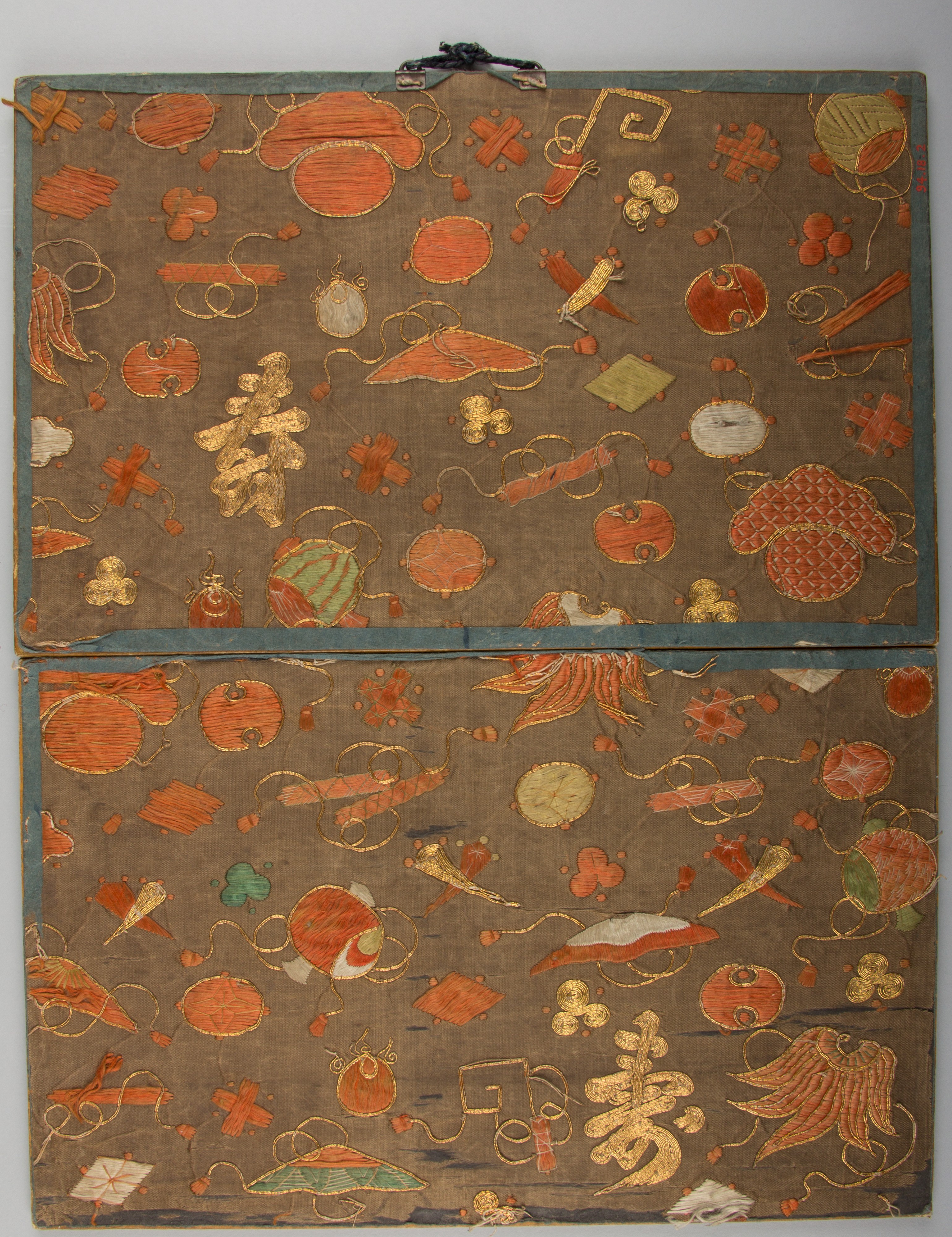Pilgrim’s Visiting Album
Not on view
An adherent of the Pure Land School of Buddhism compiled the content of these albums—slips of paper brushed with the name of the Buddha Amida (Sanskrit: Amitābha)—on temple visits. The signed and sealed slips indicate that most of the calligraphers were abbots of Pure Land temples in the greater Edo (Tokyo) area. The albums also have paintings of Amida, as well as Shandao, an influential Tang dynasty (618–907) monk; Hōnen, the founder of the Pure Land School in Japan; and a youthful Shinran, the founder of the True Pure Land School. A portrait of the monk Yūten Kenyo (1637–1718), who served as the thirty-sixth abbot of the Edo temple Zōjōji, appears on the right-hand side of a page of one album. Yūten was born in the south of what is now Fukushima Prefecture, and entered Zōjōji as a novice at the age of twelve. He struggled in the academic environment there and left, but later, a dream encounter with the deity Fudō Myōo (Sanskrit: Achala Vidyārāja) is said to have led to a personal transformation, following which he became famous for his ability to ensure birth in the Pure Land for those afflicted by tormented human spirits (onryō).
One from a set (94.18.2–.5)
Due to rights restrictions, this image cannot be enlarged, viewed at full screen, or downloaded.
This artwork is meant to be viewed from right to left. Scroll left to view more.






